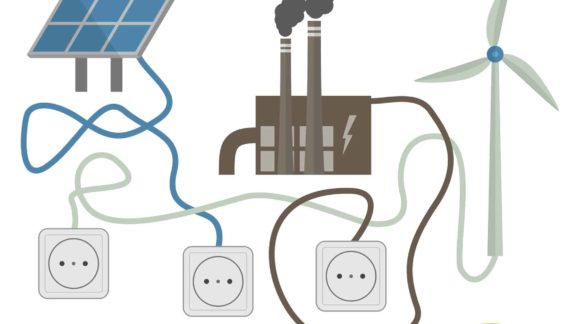The “Voluntary” Component of EPA’s Clean Power Plan Makes It Even More Unlawful

 Today I filed a comment letter on the Environmental Protection Agency’s proposed rule titled “Clean Energy Incentive Program Design Details.” The comment period closes today at the stroke of midnight.
Today I filed a comment letter on the Environmental Protection Agency’s proposed rule titled “Clean Energy Incentive Program Design Details.” The comment period closes today at the stroke of midnight.
As the title suggests, EPA’s proposal is designed to flesh out the details of the Clean Energy Incentive Program (CEIP), a major program element of the agency’s so-called Clean Power Plan (CPP), on which the D.C. Circuit Court of Appeals recently held oral argument.
The gist of my comment letter is that the CEIP makes the Power Plan even more unlawful, enlarging EPA’s already formidable power grab to pick energy market winners and losers and rig the electricity marketplace against fossil fuels.
The CEIP is what’s known in regulatory parlance as an “early action credit” scheme. In a generic early action credit program, companies that reduce emissions before the start of a compliance period receive credits they can later use during the compliance period to meet part of their obligations. They can also sell the credits in emissions trading markets.
A key point to bear in mind is that all early action credit programs transfer wealth, in the form of tradable emission credits, from those who don’t take early action to those who do. Both the environmental integrity of the associated emissions reduction program and the monetary value of the credits demand that each early credit be subtracted from, rather than added to, the supply of credits available in the mandatory period. Otherwise credit inflation would devalue the credits as tradable assets and the total supply of regulatory allowances would exceed the emissions reduction target or cap.
Thus, although often touted as “voluntary” and “win-win,” early action crediting is a coercive, zero-sum game. For every company that gains a credit in the early action period, there must be another than loses a credit in the compliance period. Early actors profit at the expense of companies that don’t participate. That is not an unintended consequence but the very purpose of such programs. The intent is to “incentivize” early reductions by imposing windfall losses on those who do not “volunteer.”
The CEIP includes two novel features not included in any previous early action program or proposal of which I am aware. First, EPA will create a federal “matching pool” equivalent to 300 million tons of carbon dioxide (CO2) to provide bonus federal credits in addition to early credits awarded by States. Second, participation is restricted to investors in renewable energy and demand-side energy efficiency projects. No credits will be awarded to utilities that achieve early CO2 reductions by improving the heat-rate efficiency of coal power plants or by shifting baseload generation from coal to gas.
In short, the CEIP is the first greenhouse gas early credit program ever adopted or proposed to discriminate against classes of early reducers based on their fuel source or core technology, and the first to intensify the zero-sum dynamic of an early action program by means of a federal-state “matching pool.”
A major criticism of the Power Plan generally is that it is a strategy to expand the market share of renewables rather than to improve the “environmental performance” (lower the emissions rate) of existing coal and gas power plants. The CPP sets performance standards for existing fossil-fuel power plants that EPA acknowledges are infeasible and unaffordable even for new sources using state-of-the-art control technology.
To meet the CPP’s unachievable standards, owners of fossil-fuel power plants have the “choice” to produce less power from coal or gas facilities, shut down the plants, or invest in new renewable units, which are not even “sources” (emitting facilities) under the pertinent statutory provision, section 111(d) of the Clean Air Act. The CPP is transparently designed to undermine the economics of coal generation and advantage renewables at the expense of both coal and gas.
The CEIP will enhance EPA’s ability to suppress coal and gas generation. To repeat, only investments in renewable energy and demand-side energy efficiency will qualify for early credits, ensuring that all early credits are awarded at the expense of fossil-energy interests. Plus, the early credit “matching pool” will intensify the pain and penalty already inflicted on fossil-energy interests by their exclusion from the CEIP, because it will further reduce the supply of credits available to them in the compliance period by an amount equivalent to 300 million tons of CO2.
The logic operating here is political, not statutory. EPA is biased against fossil fuels and seeks to rig the marketplace against fossil fuels. There is no evidence, textual or otherwise, that Congress enacted Sec. 111(d) to pick energy market winners and losers or transfer wealth from fossil energy interests to alternative energy interests.
Read the full comment letter here. More information on CEI's legal challenge to the Clean Power Plan, CEI, et al. v. EPA, is here.